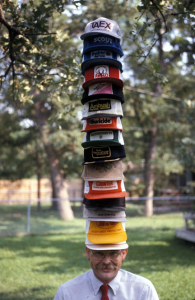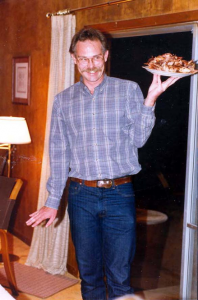Bastiaan M. Drees, Jan. 7, 2017
My parents were strictly anti-gun: no guns in the house, real or play. So, I grew up playing cowboys and Indians using my neighbors’ toy guns out of my parents’ sight. It was not until I was a boy scout that I experienced target shooting one afternoon in an open field near my junior high school that we called “the mountains,” which later became a suburb.
My only experience actually hunting anything happened shortly after I started working as an Extension specialist at Texas A&M University. At that time, having close ties to industries supporting agriculture was encouraged. This came with opportunities to participate in “hospitality suites” at professional meetings where food and drink were abundant and usually “gimme” items, like caps, pocket knives, decoy ducks, and jackets were provided. This “bribery” also included all-expense paid trips to exotic locations for “educational purposes”.
Shell Oil Company was still in the business of producing agricultural pesticides in the early 1980s. I was assigned to support the insect control needs of agricultural producers in 16 east central Texas counties from Beaumont to near Victoria that included cotton, corn, sorghum, soybeans, rice, forage, and vegetables. So, it was no surprise that I was asked to join Shell technical representatives and fellow Extension specialists at a quail hunting ranch near Refugio, Texas.
I drove down in a state car, and upon arriving, hors d’oeuvres and alcoholic beverages were already being heavily consumed. The comaraderie was high, and we quickly became very comfortable. It was time to hunt. There were two hunting jeeps equipped with seats attached to the front bumpers, as well as raised seats behind the driver. We split up randomly into two groups and were each handed shot guns. The routes were pre-determined because the ranch operators had “planted” coveys of quail. So, with hunting dogs leading the jeeps, we headed down the dirt road.
When the dogs stopped and pointed, the jeeps stopped. All the “hunters” jumped off their jeeps, aimed and started shooting as the quail took to the air in an explosion of frantic flight. Of course, I had never handled a shot gun, so all I could do was fumble around with it, trying to cock it. By the time I was ready to aim, the birds had all flown, and many lay dead or dying in the distance. Dogs retrieved the birds and gave them to the Mexican “handlers”. None of us ever had to touch one of the birds.
I quickly found out that one of the Extension agents present and sitting in the front of the jeep I was sitting high in the back of was Jerry Parsons, a horticulture agent from Bexar County (San Antonio). His Dad had been a sharp shooter, and he had grown up shooting rifles. Needless to say, his talents were on full display; he shot most of the quail we scared up as we drove from one pre-arranged location to the next. This was not a particularly safe situation. We were pretty tipsy already. As Jerry followed one fleeing quail with the sight on his rifle, he swung his gun to the side to take a shot. It fired right in front of the face of one of our colleagues. Fortunately, no harm was done except to the quail.
When we returned for lunch and more liquid refreshments, we were given the opportunity to shoot clay pigeons or disks thrown across a shooting range like Frisbees. I hit a few and learned how to load, handle, fire, and shoot my shot gun. Afterwards, we went out for a second time, but with all the novice shooters in one Jeep and all the expert shots on the other. Ah, for the lack of competition! Before we returned to camp, I had shot two quail. The rest of our stay involved more drinking, a steak dinner and a lot of talk about quail hunting that day.
I left early the next morning, being handed a plastic bag full of about a dozen cleaned and de-feathered quail to take home and cook, which I did later that year. I have never gone hunting again. The red jacket I was also given on that trip, I gave to my dad, who wore it as his favorite jacket for years and years into his retirement. However, the practice of agricultural industries providing “gimme” items and “hospitality” events soon came to an end. The perception became that these gifts were in essence bribes to gain favorable reviews from state workers serving as educational specialists for a state agency. Still, I gathered quite a collection of “freebies” and experienced numerous memorable trips throughout my career. What fun!

